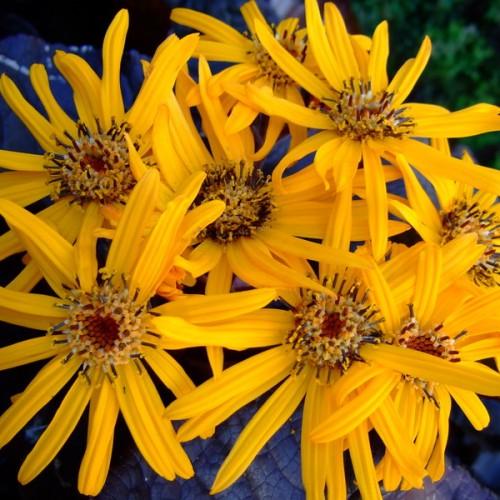
leopard plant
Ligularia dentata
Cycle:
Herbaceous Perennial
Watering:
Frequent
Hardiness Zone:
3 - 8
Flowers:
Flowers In Summer
Sun:
Filtered shade, Full sun only if soil kept moist, Part sun/part shade
Soil:
Humus rich
Fruits:
Fruits In Summer Ready In Fall
Leaf:
Yes
Growth Rate:
High
Maintenance:
Moderate
Drought Tolerant:
Yes
Care Level:
Medium
watering
Leopard plant should be watered once a week with approximately 2 cups of water each time. The soil should be kept moist but not overly saturated. During warm weather, watering twice a week may be necessary. If the leaves begin to wilt, this indicates that the plant needs more water. When possible, use warm aged rain or bottled water instead of tap water. Leopard plants enjoy humidity, so misting will keep the leaves vibrant.
sunlight
Leopard plant (Ligularia dentata) needs full to partial sunlight for optimal growth. The sunlight should be 4 to 6 hours long each day. Too much sunlight may cause the leaves to become faded or scorched. Too little sunlight may cause the leaves to be a paler color and becoming sparse. To ensure that the leopard plant remains healthy, it is important to find a happy medium. The plant should receive some morning sunlight, with some shade during peak midday hours.
pruning
The leopard plant benefits from pruning to encourage healthy and bushy growth. Prune the leopard plant in late spring, just after flowering for the best results. Start by removing dead, damaged, or unhealthy branches. Snip off withered or damaged leaves as needed. Then, cut back the larger branches by 1-third to 1-half their original length. This will help promote more bushiness and encourage new blooms. Light trimming throughout the rest of the growing season will help keep your leopard plant neat and compact while encouraging more leaves and flowers.
